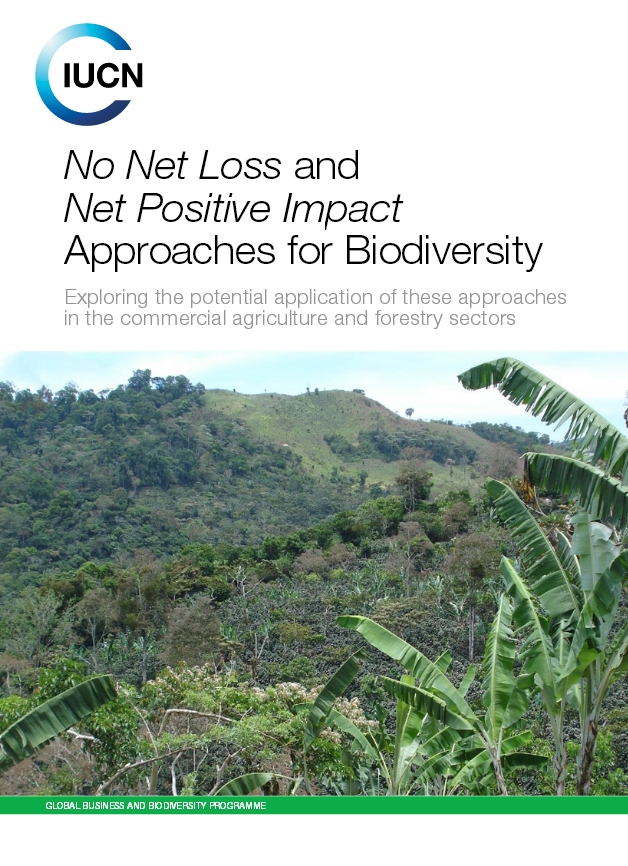 Commercial agriculture and forestry could have a net positive impact on biodiversity – say the authors of a recent report. Thanks to Fabien Quetier for informing me about one of the latest IUCN reports entitled “No Net Loss and Net Positive Impact Approaches for Biodiversity. Exploring the potential application of these approaches in the commercial agriculture and forestry sectors”. You can find the full report and the executive summary online. See also an extract form the executive summary pasted below.
Commercial agriculture and forestry could have a net positive impact on biodiversity – say the authors of a recent report. Thanks to Fabien Quetier for informing me about one of the latest IUCN reports entitled “No Net Loss and Net Positive Impact Approaches for Biodiversity. Exploring the potential application of these approaches in the commercial agriculture and forestry sectors”. You can find the full report and the executive summary online. See also an extract form the executive summary pasted below.
Executive Summary: Is an NPI approach potentially applicable to the commercial agriculture and forestry sectors?
Yes – based on the application of the five stage process, which includes the full implementation of the mitigation hierarchy – an NPI approach could potentially be applied in A&F development projects under two main conditions (not mutually exclusive):
1.Enhancing native biodiversity, and/or protecting species or areas of conservation concern:
- Where A&F production systems are designed to host more native wildlife, and to reduce impacts on native wildlife.
- Where species or areas of conservation concern are identified within the project site and are protected against negative impacts from productive activities.
2.Diversifying A&F production species on–site, and/or, improving productivity and natural resource use efficiency on–site along with promotion of safeguards to protect natural habitats off–site against conversion:
- Where crop and timber species are diversified through the introduction of new crops, agroforestry, or timber species on site.
- Where the productivity of A&F production systems are increased through yield gains and improved use of natural resources (e.g. water, soil, energy) and accompanied with safeguards to protect against conversion of existing natural areas including beyond project boundaries.
By highlighting favourable conditions for NPI approaches in A&F sectors, the report also indicates three main conditions that would not be favourable, on the basis that the risk of biodiversity losses would outweigh any opportunity for additional conservation gains:
- Where the development project will cause large–scale impacts on ecosystems and/or species in natural areas where regional biodiversity loss is not occurring.
- Where there is a risk that the protection measures and safeguards for natural habitat areas and/or species and areas of conservation concern in and around the production site will be poorly designed or will not be enforced effectively.
- Where the identification of relevant biodiversity values to establish NPI goals has not been derived from existing societal biodiversity conservation goals in policies or plans (e.g. national biodiversity policies, strategies, action plans, international policy), and not taken account of local and other relevant stakeholder input (including farmers, foresters, and resident communities as applicable).

Pingback: IUCN webinar (11 June) on 'No Net Loss and Net Positive Impact Approaches for Biodiversity: exploring the potential application of these approaches in the commercial agriculture and forestry sectors' - Biodiversity Offsets Blog
Pingback: Newsletter of the Business and Biodiversity Offset Programme, May 2015 - Biodiversity Offsets Blog